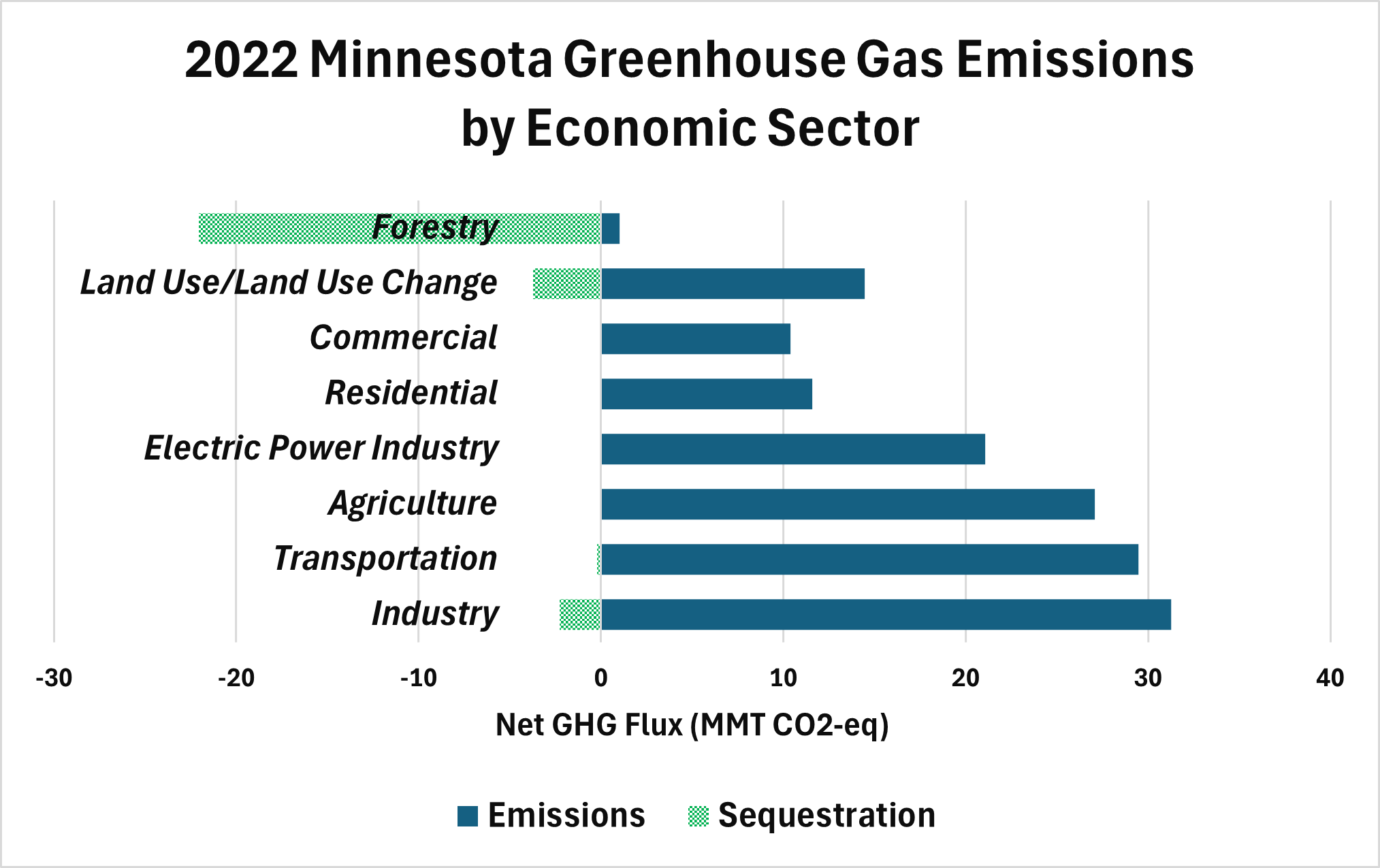Minnesota Forest Carbon Research
Managing for a Changing Climate
The Minnesota Forest Resources Council funded research completed in 2024 by the University of Minnesota to better understand Minnesota’s forest carbon cycle. The project was the first statewide research to account for and forecast carbon storage across Minnesota's entire forestry sector – this means carbon within forests and carbon in the products made from wood harvested from forests. The research provides a current look at carbon storage and emissions in Minnesota’s forests and forestry sector and simulates changes over 100 years under various scenarios for managing the forest.
Explore the Research
Forest Carbon Research Report Forest Carbon Dashboard Forest Carbon Fact Sheet
Findings offer information to aid Minnesota’s forestry sector in reducing greenhouse gas (GHG) emissions and improving carbon sequestration and storage associated with forests and forest products. Results show that Minnesota’s forests have an important role to play in achieving the state’s climate action goals.

Forestry is the only economic sector in Minnesota that offsets greenhouse gas emissions (GHG). Minnesota’s forests absorb about 22 million metric tons of atmospheric carbon each year, offsetting about 15 percent of the state’s annual GHGs as estimated by the Minnesota Pollution Control Agency (146 MMT CO2). Download graph.
Keep in Mind
This research should be considered within the wider context of forest management and climate goals. Climate adaptation and carbon management are two of many services our forests provide. Managing forests for a single outcome can lead to loss of ecological, economic, cultural, and social benefits they provide. To be sustainable, forest management must balance all forest resources.
The research model did not account for climate change, including large events that can disrupt the forest like wildfire or an increase in tree mortality. Such events could contribute to the release of stored carbon into the atmosphere and reduce the amount of carbon sequestration and storage. This model also held the proportion of Minnesota’s forests subjected to various management scenarios constant at 2020 levels while adjusting silvicultural treatments and management intensity on those acres. As a result, under all scenarios the overall forest age and forest carbon storage increased. As average forest age increased beyond maturity, the model projected declining growth (sequestration) and increased emissions from mortality and decomposition on unmanaged acres. However, comparison among model results also shows that forest management can be used to regulate the age structure and species composition of the forest to sustain future growth and carbon storage rates.
For a complete description of project caveats and limitations, see the research report pages 5-8.
Related Reports and Resources
- Forest Carbon Cycle Infographic
Visual depiction of how carbon flows through forests and wood from Dovetail Partners. - Sustainable Forests Education Cooperative Webinar: Forest Carbon Strategy Assessment Report (2025)
Researchers discuss analysis of how different forest management scenarios impact carbon sequestered and stored in Minnesota's forests and the associated harvested wood products Minnesota forests produce over an extended period of time. - Forests and Carbon in Minnesota: Opportunities for Mitigating Climate Change (2023)
DNR report discussing forest-based climate change mitigation pathways. It also defines goals and sustainable forestry strategies to guide entities and individuals engaged in managing Minnesota’s forests. - Carbon in Minnesota's Forests Current Status and Future Opportunities (2022)
MFRC report summarizing a project to synthesize forest carbon resources; gather stakeholder input on forest carbon; and visualize forest carbon attributes across MFRC regional landscapes. It also identifies information needs in the themes of markets, forest management, and data and technology. - MFRC Resolution 2023-2
Examine the Implications of Carbon Markets in Minnesota - MFRC Resolution 2022-2
MFRC resolution supporting increased Minnesota nursery capacity to contribute to the state’s climate change goals. - MFRC Resolution 2022-1
MFRC resolution supporting the state’s climate change goals through development of sustainable forest product markets. - Climate Change and Minnesota’s Forests (2020)
MFRC report assessing the impacts, challenges, and opportunities associated with climate change for Minnesota’s forests. It discusses challenges for forest management, climate adaptation strategies, knowledge gaps and recommendations.

